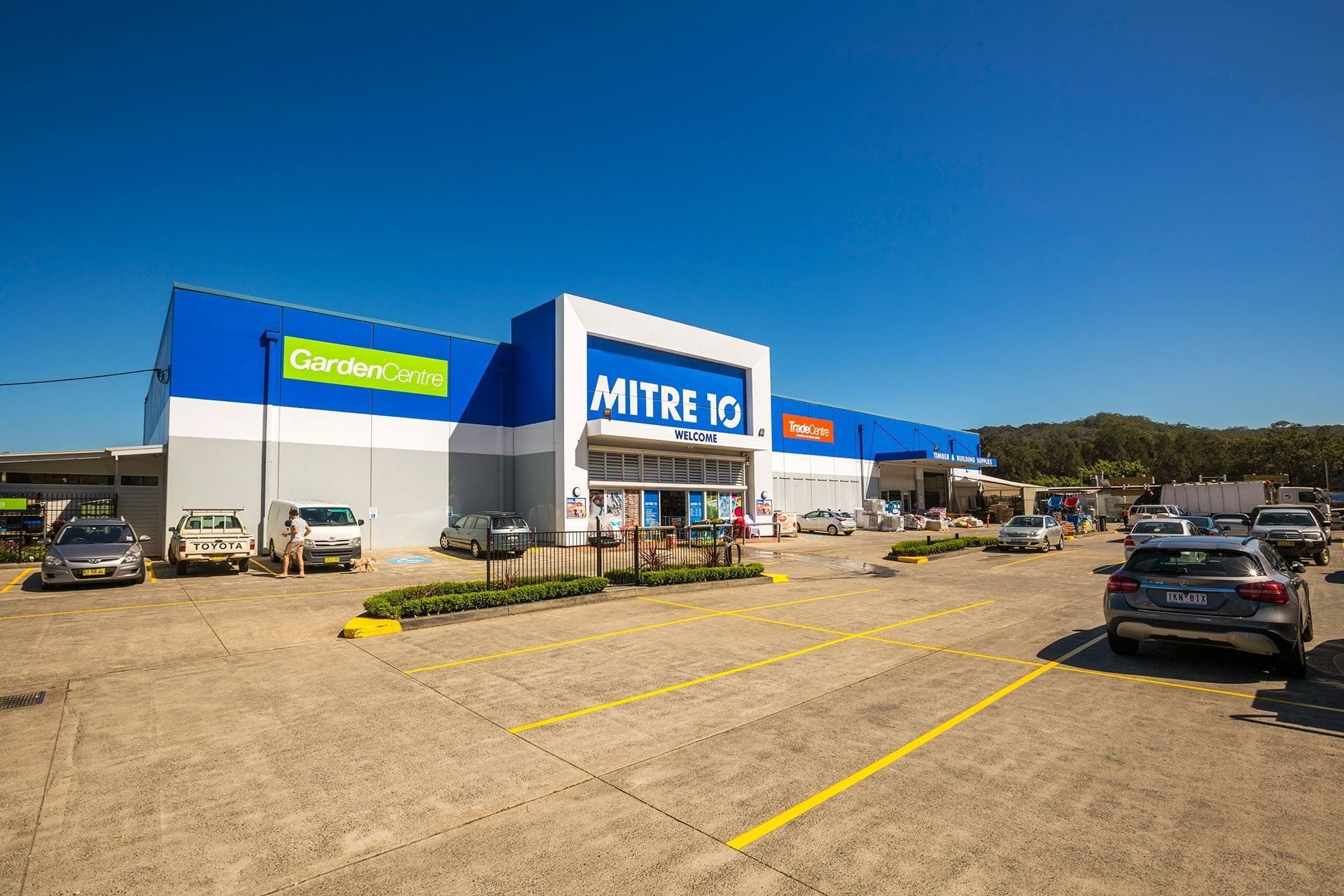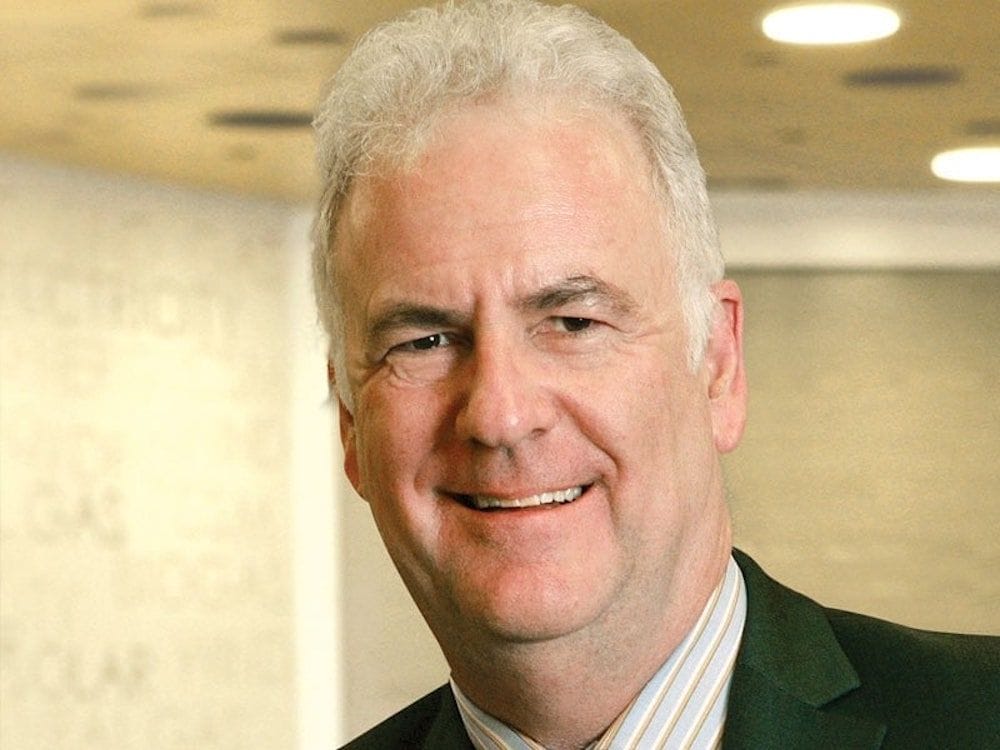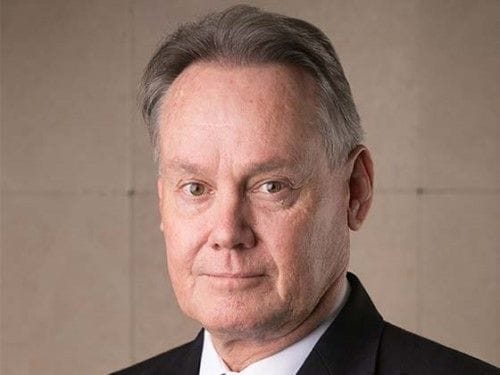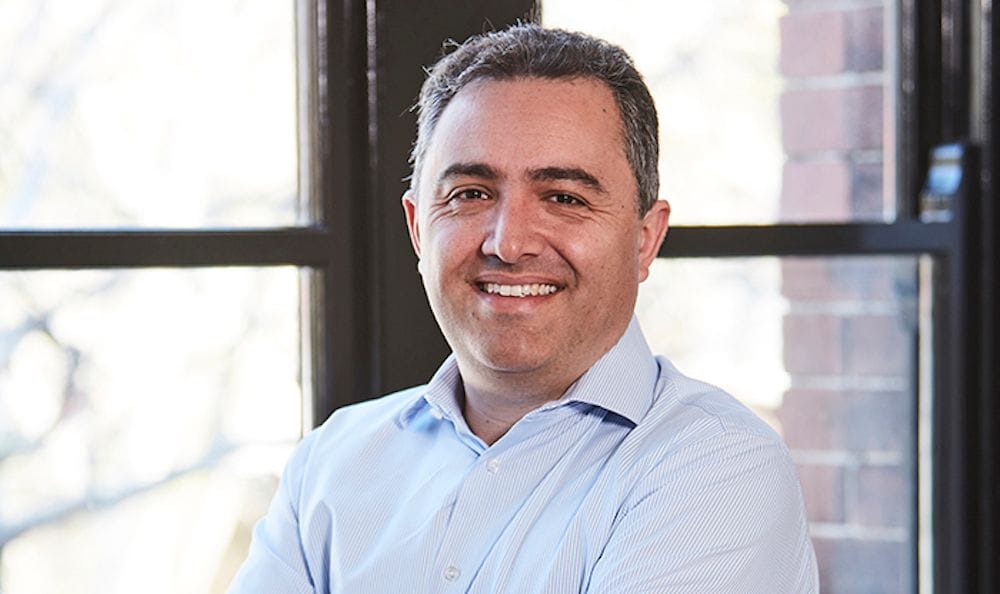From electronics design software to toasters, IGA supermarkets to buy-now pay-later, the pointy end of the 2021 Sydney Top Companies list is as mixed bag as any.
But the outstanding performer in this cohort is not exactly in a trailblazing sector, but rather in the seemingly straightforward business of annuities and retirement income. At its core the business model is about giving financial stability to customers, so if investments perform well it pockets more profit, but if they fall it is still obliged to pay out.
Thankfully for Challenger, it was more a case of the former. Living up to its name, the company surged eight spots after its shares rose by 55 per cent over the past year, setting the bar quite high for an incoming CEO who at the time of writing is yet to be chosen.
While management of the companies below would prefer their businesses were much higher up this list, there is no shame in being in the bottom 10 of a list comprising the largest companies of Australia’s leading city as far as publicly-listed wealth is concerned.
In fact, none of the companies in the equivalent section of the Melbourne Top Companies list would have made it here, which at least Sydneysiders can take as a small win in a year that has taken its toll on everyone.
41. Altium (ALU)

Information Technology
2020 rank: 38
Market Cap: $4.35b
FY21 revenue: US$191.1m ($264.5m)
FY21 profit: US$35.27m ($48.8)
Listed: 1999
CEO: Aram Mirkazemi
CEO salary: US$1.01m ($1.4m)
It’s been a heady rollercoaster ride for shareholders of electronics design software group Altium (ASX: ALU) this year, aided by a $5 billion takeover bid from US software giant Autodesk Inc. (NASDAQ: ADSK) in June.
The peaks and troughs in the share price since then, as investors weighed up the chances of a bid succeeding, have distracted the market from an otherwise solid full-year financial performance by Altium.
The Autodesk bid stemmed from preliminary talks held between the companies earlier this year as the US company sought to secure a strategic partnership. The talks may not have gone the way Autodesk would have liked, leading it to make its tilt for Altium with a bid pitched at an attractive premium to the company’s flagging share price at the time.
The Altium board rejected the offer of $38.50 a share, saying it undervalued the business, even though Altium shares were trading below $28 each when the offer was made. Autodesk has since abandoned the takeover despite rumours that it was planning to lift its bid and it’s unclear whether there has been any further dialogue between the companies since then.
Despite Altium’s share price volatility, the company’s stock is now well off its low of $23.66 reached in May.
The share price earlier this year was weighed down by a fall in revenue in the first half of FY21, which shocked investors after eight consecutive years of double-digit growth. Altium blamed COVID disruptions in the US and Europe for the 4 per cent slide in revenue, as well as challenging conditions in China.
However, double-digit growth returned for the second half, with revenue up 16 per cent to hit the company’s full-year guidance at US$191.1 million ($264.5 million). After-tax profit rose 79 per cent to US$35.3 million ($48.9 million).
CEO Aram Mirkazemi, driving home the message that the Autodesk bid was opportunistic, says Altium is targeting US$500 million ($692 million) in revenue and 100,000 subscribers by 2025. It’s a lofty goal that would see revenue more than double the FY21 levels.
Altium says the growth forecast is underpinned by its ‘unique position within the global engineering software industry and track record of strategic execution’. The company has a niche market position as a producer of software to help design printed circuit boards.
The rebound in the second half has led the company to upgrade revenue growth to between 16 and 20 per cent for FY22.
It’s interesting to note that Mirkazemi as CEO was paid less than of the company’s two senior executives this year. Chief sales officer Henry Potts was awarded US$3.09 million ($4.3 million), with his pay topped up by the receipt of 100,000 shares, the last tranche of 400,000 shares that were awarded to him at the time of his appointment in 2015.
CFO Joseph Bedewi received US$1.41 million ($1.9 million), with his pay bolstered by the awarding of 40,000 shares as part of 200,000 shares granted when he joined Altium in 2016. Mirkazemi, who owns more than 9.5 million Altium shares, received just over US$1 million ($1.4 million) in FY21.
42. Challenger (CGF)

Diversified Financials
2020 rank: 50
Market Cap: $4.19b
FY21 revenue: $2.79b
FY21 profit: $592.3m
Listed: 2003
CEO: Richard Howes
CEO salary: $3.57m
Richard Howes is leaving on a high at annuities company Challenger (ASX: CGF) after the financial services group returned to profit in FY21.
Howes, who has been with Challenger for 18 years including the last three as CEO, announced he would be retiring from the position in March next year.
This gives the Challenger board plenty of time to choose a replacement as long-serving executive Chris Plater steps into the deputy CEO position in the meantime.
Howes offered no reason for his departure even though he has more than a year to go before his five-year contract expires.
“With the certainty that the business is primed for growth, I feel that now is a good time to step aside and begin the process for a new leader to drive Challenger’s exciting next chapter,” he said in a statement to the ASX in August.
In FY21, Challenger’s assets under management rose 29 per cent to a record $110 billion, with strong contributions from both its Life and Funds Management businesses.
Challenger’s net profit for the year surged to $592 million, up from a $416 million loss in FY20 - and driven by a recovery of more than $500 million of the previous year’s investment losses.
Challenger’s primary aim is to secure sustainable returns for owners of its life products and through its funds management operations.
“This year, we have taken decisive action to set up the business for future growth – executing our strategy to diversify revenue, repositioning our investment portfolio and strengthening our balance sheet,” Howes said.
Challenger stepped up these plans with the $35 million acquisition of Australian digital bank MyLifeMyFinance. The deal was finalised in July this year, giving Challenger exposure to a growing market for online banking services.
MyLifeMyFinance is an authorised deposit-taking institution and digital bank that offers basic services such as savings and lending products. MyLife MyFinance has a licence for a term-deposit offering.
Challenger describes the acquisition as ‘highly strategic’, providing the group with an opportunity to ‘significantly expand its secure retirement income offering, including entering Australia's term deposit market’.
“The bank provides Challenger the opportunity to attract and engage with customers at an earlier age, as they approach and enter the retirement phase, increasing Challenger’s brand recognition in early age demographics,” it says.
43. Metcash (MTS)

Consumer Staples
2020 rank: 47
Market Cap: $3.82b
FY21 revenue: $14.31b
FY21 profit: $239.0m
Listed: 2005
CEO: Jeff Adams
CEO salary: $5.56m
Independent grocery wholesaler Metcash (ASX: MTS) reaped the benefits of a renewed consumer reliance on neighbourhood shopping, along with the mass migration of city dwellers to regional areas in FY21.
CEO Jeff Adams says the trend has driven "strong sales growth across our independent retail networks, significantly improving their overall health".
The trend has continued into the current year with the group’s supermarkets, liquor and hardware divisions all reporting double-digit growth in underlying earnings for the first eight weeks of FY22. Metcash is a supplier to the independent brands IGA, Mitre 10, Cellarbrations and Total Tools.
Metcash is benefiting from the pandemic way of life in each of these business divisions, driven by more people eating and drinking at home, and an increase in home renovation and DIY activity.
Lifting its exposure to the DIY market and the building boom, Metcash bought a 70 per cent stake in Total Tools for $57 million late last year with a plan to move to full ownership within three years. Total Tools is the largest tool retail network in Australia with 81 bannered retail stores.
In June, Metcash lifted its stake further in Total Tools - to 85 per cent - taking its total acquisition cost for the business to $59.4 million. The company plans to have full control of the business by the end of FY24.
Metcash is also looking at stepping up its digital sales strategy across the group, a process that has been accelerated by consumer needs during COVID.
“While Independent Hardware Group and our newly acquired Total Tools business already have leading digital technology, digital has generally been a low priority for our food and liquor independent retailers until the onset of COVID,” says Adams.
“The acceleration of online sales and our e-commerce platforms in food and liquor last year has significantly increased interest from our retailers in digital solutions,” he says.
During the year, Metcash upped its original plan for a $175 million share buy-back to $200 million due to solid demand from shareholders. The off-market buyback was completed in August.
44. Breville Group (BRG)

Consumer Durables & Apparel
2020 rank: 42
Market Cap: $3.81b
FY21 revenue: $1.19b
FY21 profit: $90.96m
Listed: 1999
CEO: Jim Clayton
CEO salary: $3.61m
Home-made toasties, cappuccinos and juices that sustained the work-from-home brigade over the last year helped consumer goods company Breville Group (ASX: BRG) crack the $1 billion sales threshold in FY21.
The record $1.19 billion in sales drove a 42 per cent increase in net profit to $90.9 million.
However, Breville’s management is not taking its success for granted, especially since the sales surge was largely driven by an unprecedented spike in demand during the pandemic.
Some of that growth was due to expansion of the group’s operations globally, with Europe showing the biggest gains for the business. The European business, where it expanded in France, Portugal and Italy, is now bigger than Breville’s Asia-Pacific operations.
Breville is expecting a return to more normal conditions in the current financial year due to a pent-up demand for services among consumers who are more likely to spend their pandemic savings on travel and entertainment rather than toasters.
Despite the solid performance in FY21, Breville navigated the challenges of unreliable global supply chains and says inventory levels had improved by the end of the year.
The pandemic led to significant abnormal expenses, although these were largely offset by some ‘sizable abnormal cost savings’.
Breville CEO Jim Clayton took advantage of the company’s improved share price by selling 328,338 shares in March. It was a significant component of his holding in the company, which has now been whittled down to 180,393 ordinary shares and 427,650 performance and fixed deferred remuneration rights.
The sale, in line with company protocols, would have netted the CEO close to $9 million. Clayton used the proceeds to buy a new home and to pay a personal tax bill created through the vesting of performance rights as part of his remuneration package.
45. AGL Energy (AGL)

Utilities
2020 rank: 23
Market Cap: $3.77b
FY21 revenue: $10.94b
FY21 loss: $2.06b
Listed: 2006
CEO: Graeme Hunt
CEO salary: $2.25m
The decision by power generator group AGL Energy (ASX: AGL) this year to demerge its coal assets from its retail electricity operations has failed to halt the relentless fall in the company’s share price that began in earnest more than four years ago.
A near halving of the AGL share price since the demerger was announced in March has pushed the company close to the bottom of this year’s Sydney Top Companies list from 23rd position in 2020.
AGL plans to create two companies following the split, one with clean energy assets, AGL Australia, and the other with the coal-fired power stations, Accel Energy.
The decision led to CEO Brett Redman resigning from AGL after 15 years with the company, saying he wasn’t able to make a long-term commitment to the group post-merger.
Chairman Peter Botten earlier this year described AGL as being at an ‘inflection point’ due the rapid take-up of renewable energy and the run of institutional funds being diverted away from fossil-fuel assets.
However, there is more weighing on AGL’s share price than its profile as Australia’s largest corporate greenhouse gas emitter.
A slump in wholesale power prices, combined with lower demand for electricity due to lockdowns, dogged the company last financial year and into FY22. After posting a $2.06 billion loss last financial year, the company has warned profit could fall as much as 60 per cent in the current year as prices remain depressed.
AGL may have been caught out by the pace of change within the industry, but it has been moving towards renewables for the past two decades.
“In the last few years alone AGL has directly invested around $2 billion in firmed renewable projects including over $180 million in the construction of the 250MW Torrens Island battery,” says Botten.
“The battery will support the growth of intermittent renewable energy in South Australia and will be the first to begin construction within AGL’s planned 850MW national battery roll-out.”
Over the past year, AGL has announced a number of acquisitions in the renewable space, including a deal for Australia’s largest commercial solar business, Solgen Energy Group, and rival operation Epho Holding. This positions AGL as Australia’s largest solar commercial solar energy provider.
The demerger of AGL is some way from being finalised with shareholders to vote on the proposal in the June quarter next year.
If it succeeds, the newly formed Accel Energy will hold between 15 and 20 per cent of AGL Australia. The latter, despite its clean energy model, will be contracted to accept coal-fired power from Accel Energy until 2027.
AGL’s CEO Graeme Hunt, who stepped down as chairman to replace Redman on an interim basis earlier this year, will transition to become CEO of Accel Energy while Christine Corbett will lead AGL Australia.
46. Zip Co (ZIP)

Financials
2020 rank: 43
Market Cap: $3.68b
FY21 revenue: $403.2m
FY21 loss: $652.5m
Listed: 2009 as Rubianna, which acquired Zip in 2015
CEO: Larry Diamond
CEO salary: $921,222
If 2020 was the year buy-now pay-later (BNPL) player Zip Co went global, 2021 was about consolidating on its international vision.
Having established a high-performing business arm in the United States following its $400 million acquisition of QuadPay in September 2020, Zip went on to move into new markets via acquisition.
This plan, dubbed by co-founder Larry Diamond as a “coalition-of-founders” model, has seen Zip make small investments in BNPL players in order to get to know the businesses and their leaders before completing takeovers.
This model has been behind the company’s rapid global expansion; over the past 12 months Zip has made acquisitions in the EU (Twisto Payments) and the Middle East (Spotii Holdings) backed by $400 million of senior convertible notes raised in April 2021.
India is the next global market in the sights of Diamond and fellow co-founder Peter Gray following a strategic investment of $69 million in ZestMoney - a leading local operator with 11 million registered users.
The ZestMoney play builds on similar investment-led moves that are currently ongoing, namely in South Africa via its stake in Payflex and the Philippines via TendoPay.
Speaking to Business News Australia earlier this year, Diamond emphasised his unorthodox approach to global expansion is necessary if Zip wants to keep pace with the global fintech giants.
“We actually need founder-led minds in local regions who have the speed, the passion, the innovation, the hustle, with our balance sheet to propel forward. If you look at certain regions, they've more been acqui-hires,” he said.
“In some markets it might take three years to get in, and we need critical mass immediately. If you wait three years, the game is going to be over so you have to think creatively.
“So this is not a multi-platform strategy; it's really a single platform strategy. It's that growth mindset - we fly while we build.”
The strategy appears to be paying off for Zip. At the end of FY21, the company reported record revenue of $403.2 million (up 150 per cent) and record transaction volumes of $5.8 billion (up 176 per cent) from 41.3 million transactions through the BNPL platform.
The company is still loss making, but Diamond remains sure his cash-heavy approach to global expansion is necessary, especially if it is to catch up to Australia’s number one BNPL player Afterpay (ASX: APT).
“The payments ecosystem is a huge ecosystem. What you will see is that over time, while many of us are put in the same box, we will actually end up in very different places,” Diamond told Business News Australia.
“I think based on total addressable market (TAM) there is place for multiple payment wallets, with different customer segments solving different customer needs.
“This is not necessarily a winner takes all scenario. I think we've seen many industries where there can be multiple winners, and I think payments probably has the space for significantly more, particularly on a global scale.”
While the focus is well and truly on Zip’s BNPL acquisitions, the company is certainly not limiting itself to that sector.
In October 2020 Zip announced an $8.5 million acquisition of Sydney-based technology company Urge Holdings, known for its fashion search engine The Urge as well as a “Shazam for fashion” app known as Shnap, marking a step into diversified retail services for the company.
And while much of BNPL’s success has gone hand-in-hand with the recent explosion of online shopping, payment cards have not been totally shunned by Zip.
Just a few days before acquiring Urge, Zip cosied up to Visa to launch a new virtual card that allows users to shop at any inshore or online retailer where Visa is accepted and can be added to selected digital wallets including Apple Pay and Google Pay.
47. Brickworks (BKW)

Materials
2020 rank: 46
Market Cap: $3.68b
FY21 revenue: $890.31m
FY21 profit: $239.16m
Listed: 1962
CEO: Lindsay Partridge
CEO salary: $4.52m
A glance at the long-term price chart for shares in Brickworks (ASX: BKW) reveals a fairly consistent performer for investors over the past decade.
Brickworks shares hit a record high in September this year, which is not new to investors who have seen the share price frequently hit new highs as they have more than doubled in a decade. There was a short-lived COVID slump in March 2020, but the stock price quickly resumed its upward trajectory.
Brickworks is Australia’s largest brickmaking company, but it is primarily an investment group with industrial assets, and notably a major share in investment house Washington H Soul Pattinson (ASX: SOL).
While the merger of Soul Patts and Milton Corporation (ASX: MLT) this month saw Brickworks’ 39.4 per cent shareholding watered down to 26.1 per cent of the $10.8 billion merged entity, Brickworks retains significant exposure to Soul Patts’ performance which has helped drive the company’s share performance.
Soul Patts and Brickworks originally invested in each other as a defence against potential takeover moves. Robert Millner is chairman of both companies.
FY21 was a solid year for Brickworks in its core brick business, which comprises the Austral and Nubrik brands, although the year wasn’t without challenges.
As Australian homebuyers in the first half of FY21 rushed to take advantage of the federal government’s HomeBuilder grant, sales remained subdued until the elevated construction activity started to filter through. Sales momentum was frequently interrupted by lockdowns from state to state. The shortage of tradies added to the pressure for builders to meet demand.
In the US, where the company employs more than 1,000 staff, the challenges were even more significant with more than half its staff unable to work for various periods in order to maintain COVID-safe practices. As a result, the company’s brick manufacturing activities were seriously impacted during the year.
CEO Lindsay Partridge is confident the US market is shaping up strongly in the current year thanks to government stimulus initiatives, while company has bolstered its team in the country through the acquisition of IBC – the leading brick distributor in Illinois and Indiana.
The surge in activity over the year pushed Brickworks to a record underlying net profit after tax of $285 million, up 95 per cent on the prior year.
Brickworks’ new Australian industrial investments include a new masonry plant at Oakdale East in Sydney, which reached practical completion in July, and a new brick facility at Horsley Park, also in Sydney, where construction is underway.
At Oakdale West, where Brickworks is delivering a major industrial project in joint venture with Goodman Group (ASX: GMG), the partnership has secured a 20-year lease with online retail giant Amazon which will establish a state-of-the-art distribution facility on the site. The building is expected to be completed in the current half.
48. Whitehaven Coal (WHC)

Energy
2020 rank: N/A
Market Cap: $3.56b
FY21 revenue: $1.55b
FY21 loss: $543.9m
Listed: 2007
CEO: Paul Flynn
CEO salary: $2.56m
Whitehaven Coal (ASX: WHC) makes a return to the Sydney Top Companies list in 2021 following a stellar run for the coal miner’s share price over the past year.
The stock has more than tripled in value from around $1 this time last year, driven by record-high coal prices in the wake of global shortages. The shares gained their second wind with another spike in August, despite Whitehaven delivering a $543.9 million loss in FY21.
It is the forward view that appears to be inspiring investors.
“Today, the outlook is better than we have seen for some time, with the strong price environment putting us on an accelerated timeline to de-leveraging the balance sheet and returning cash to shareholders,” says Whitehaven CEO Paul Flynn. “
We’re optimistic about the continuing demand for our high-quality product in a more carbon-conscious world.”
Whitehaven is focusing on high-grade coal at the company’s Narrabri coal mine, leading the company to slash its existing reserves by excluding low-grade deposits. This resulted in a hefty impairment recorded in FY21 which explains much of Whitehaven’s bottom-line loss, although weaker revenue still led to a pre-tax loss for the group.
Whitehaven is Australia’s largest independent producer of high calorific-value (CV) thermal and metallurgical coal used for steelmaking. Both 6000 CV and 5500 CV coal prices reached record highs this year.
With China out of the equation for Australian coal miners due to trade tensions, Whitehaven is focusing on mining the high CV coal that is being actively sought by other markets.
Whitehaven’s coal exports to Asia – including premium markets in Japan, Korea, Taiwan, India and Vietnam – are used in high-efficiency, low-emission electricity generation, steelmaking and nickel smelting.
Whitehaven struck geological problems at its Narrabri operations this year, which meant it wasn’t able to capitalise fully on surging coal markets. However, the group is looking to get production back to normal this financial year.
49. AMP (AMP)

Financials
2020 rank: 39
Market Cap: $3.36b
1H21 revenue (operates on a calendar year): $1.7b
1H21 profit (operates on a calendar year): $146m
Listed: 1998
CEO: Alexis George
CEO salary: $1.715m + incentives
Changes were afoot this year at financial services giant AMP, including the introduction of a new CEO, but not enough to bolster the company’s dwindling share price.
In the year since this list was last published, AMP has lost nearly $1 billion in value. The dip has been so pronounced that if this list were published two weeks earlier the company would not have made it at all.
Despite a new leader attempting to right the boat and enact a new strategy, the ghosts of Royal Commissions past continued to haunt the company looking to put numerous controversies to bed.
On 30 June 2021 the former deputy CEO of ANZ (ASX: ANZ) Alexis George stepped into the top job at AMP, following the retirement of Francesco De Ferrari who led the company through a tumultuous period.
She joined a small cohort of female leaders of ASX 200 companies, alongside those heading up Macquarie (ASX: MGQ), Mirvac (ASX: MGR), and CSR (ASX: CSR), and was appointed to lead the company’s new strategy - one focused on streamlining AMP including de-merging parts of the business and selling sections of it to new buyers.
George was not the only new appointment at the top of AMP; US-based asset manager Shawn Johnson was hired to replace Boe Pahari as CEO of AMP Capital - a former executive who was pressured out of his role following an internal sexual harassment complaint that became public.
The changes at the top of the AMP subsidiary came ahead of a planned demerger of AMP Capital from the parent company, expected to be completed in the first half of FY22.
Separately, Michael Hirst was appointed as a non-executive director to the AMP Board, effective from 1 July 2021.
In the meantime, failings first uncovered by the Royal Commission into the financial services industry continued to plague AMP.
In May, the Australian Securities and Investment Commission (ASIC) announced it was seeking pecuniary penalties against five AMP subsidiaries for allegedly charging life insurance premiums and advice fees to more than 2,000 deceased customers despite being notified of their deaths.
In separate proceedings, ASIC also alleged AMP via six companies that are, or were, part of the parent charged customers $600,000 in fees for no service on corporate superannuation accounts.
In October 2020, AMP received an acquisition bid that would’ve seen US-based investment manager Ares Management Corporation acquire the entire company - however that fell through a few months later as the company announced a FY20 NPAT of $295 million, reflecting the impacts of COVID-19 on the firm’s clients, business and the broader economy and financial markets.
Instead, AMP and Ares entered into a non-binding heads of agreement to pursue the formation of a joint venture for the Australian financial services company’s private markets businesses whereby the US firm would acquire 60 per cent of the private markets business and assume management control, with AMP retaining 40 per cent. Ultimately, this deal also fell through.
Burnt twice by Ares, AMP announced in April it was looking to de-merge the private markets business which would create two separate listed entities - AMP Limited and ‘Private Markets’. AMP shareholders will receive shares in Private Markets proportional to their existing shareholdings in AMP once the demerger is complete.
Come July 2021 and AMP Capital’s Global Equity and Fixed Incomes (GEFI) business found a new buyer in Macquarie Group as part of the new CEO’s plan to streamline the company.
AMP Capital and Macquarie entered into a binding agreement under which the latter spent $185 million to acquire GEFI which manages approximately $60 billion in assets.
“In bringing together two well-known Australian investment businesses with strong track records, we’re pleased to deliver such a positive outcome for our clients, our GEFI teams and AMP shareholders,” AMP acting CEO James Georgeson said at the time.
“Our review of the GEFI business last year showed it had strong capabilities and performance but needed greater scale to compete effectively.”
50. Domain Holdings Australia (DHG)

Media & Entertainment
2020 rank: N/A
Market Cap: $3.13b
FY21 revenue: $294.16m
FY21 profit: $34.27m
Listed: 2017
CEO: Jason Pellegrino
CEO salary: $2.74m
The hot property market has been good news for online marketplace Domain Holdings Australia (ASX: DHG) in FY21, as it makes a debut on the Sydney Top Companies list.
Domain, which is majority owned by Nine Entertainment Holdings (ASX: NEC), leveraged off strong market conditions in the second half to deliver a 17 per cent increase in core digital revenue and a 33 per cent lift in EBITDA.
The company’s earnings growth has led to an increase in market capitalisation of around 50 per cent since this time last year.
Domain’s growth ambitions were evident earlier this year when the company teamed up with private equity group KKR in a snap $3.1 billion takeover bid for PEXA Group (ASX: PXA), a platform that facilitates conveyancing and settlement activities for property purchases.
The move was aimed at snaring control of PEXA ahead of a potential ASX listing. The deal would have seen the Domain and KKR acquire Link Administration Holdings’ (ASX: LNK) 42.8 per cent stake and Commonwealth Bank of Australia’s (ASX: CBA) 23.9 per cent holding in PEX which it acquired in 2018.
After failing in its bid, which ultimately led to the PEXA proceeding with a $3.3 billion IPO, Domain turned its attention back to its core marketplace business growth strategy.
“The journey is taking Domain from its origins as an online classified portal, with ubiquity and broad reach, to a property marketplace that delivers to our purpose,” says CEO Jason Pellegrino.
“Our heritage as a classifieds business has been incredibly valuable in establishing a sizeable and strong core listings business on which to build our marketplace.”
Domain is looking to FY22 with some confidence, with listings slightly up on last year for the year so far. Listing volumes remain affected by lockdowns.
In September, Domain secured a deal to buy Insight Data Solutions, building on the group’s existing property data offering. Insight Data Solutions brings to Domain services in land and property valuation and analytics. Importantly. Insight offers services to state and local governments.
READ MORE
Market caps are based on the close of trade, 5 October, 2021. This list was prepared with information provided by the ASX.
Never miss a Top Companies update or news story: Sign up to Business News Australia's free news updates
Follow us on Twitter, Facebook, LinkedIn and Instagram
Get our daily business news
Sign up to our free email news updates.

)





)

)
)
)
)

